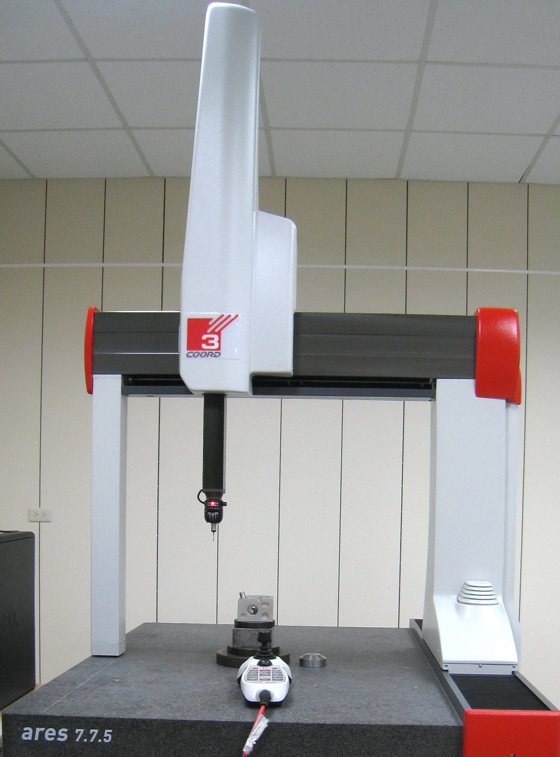New Facility: 3D Coordinate Measuring Machine

A coordinate measuring machine (CMM) is a device that measures the geometry of physical objects by sensing discrete points on the surface of the object with a probe. Various types of probes are used in CMMs, the most common being mechanical and laser sensors, though optical and white light sensor do exist. Depending on the machine, the probe position may be manually controlled by an operator or it may be computer controlled. CMMs typically specify a probe's position in terms of its displacement from a reference position in a three-dimensional Cartesian coordinate system (i.e., with XYZ axes). In addition to moving the probe along the X, Y, and Z axes, many machines also allow the probe angle to be controlled to allow measurement of surfaces that would otherwise be unreachable.
The typical 3D "bridge" CMM allows probe movement along three axes, X, Y and Z, which are orthogonal to each other in a three-dimensional Cartesian coordinate system. Each axis has a sensor that monitors the position of the probe on that axis, with typical accuracy in the order of microns. When the probe contacts (or otherwise detects) a particular location on the object, the machine samples the axis position sensors, thus measuring the location of one point on the object's surface, as well as the 3-dimensional vector of the measurement taken. This process is repeated as necessary, moving the probe each time, to produce a "point cloud" which describes the surface areas of interest. The points can be measured either manually by an operator or automatically via Direct Computer Control (DCC) or automatically using scripted programs; thus, an automated CMM is a specialized form of industrial robot.
A common use of CMMs is in manufacturing and assembly processes to test a part or assembly against the design intent. The measured points can be used to verify the distance between features. They can also be used to construct geometric features such as cylinders and planes etc. for GD&T such as roundness, flatness and perpendicularity can be assessed.
